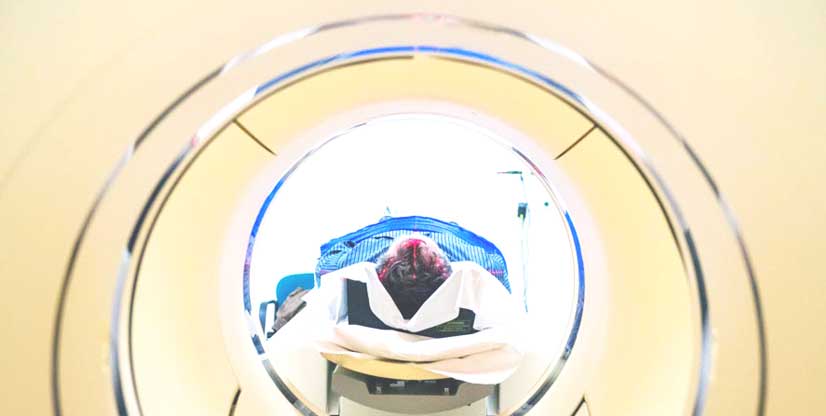Clinics & services
Diagnosing brain, spinal cord, nerve & muscle disorders
For patients
- Home
- Clinics & services
- Scans & tests
- Diagnosing brain, nerve & muscle disorders
- For patients
Neurodiagnostics ultrasound
Ultrasound is a test that uses sound waves to produce a picture. Ultrasound can be used to look at the arteries of the neck and brain to investigate the blood flow.
A carotid ultrasound looks at the arteries in the neck, which supply the brain. The test uses a probe placed against the skin on the neck. It is not painful and there are no side effects. The test takes around 30 minutes to complete.
A Transcranial Doppler (TCD) ultrasound looks at the blood flow of the arteries in the brain. This is done by placing an ultrasound probe on the side and back of the head. This procedure is safe and takes around 30 minutes to complete. This test is not available elsewhere.
Neuromuscular ultrasound uses sound waves to produce pictures of the muscles and nerves in the wrist and arm. This test is to investigate carpal tunnel syndrome and results are reviewed with the findings of your nerve conduction study. This procedure is safe and takes around 30 minutes.
Electroencephalogram (EEG)
An EEG is a recording of electrical activity in the brain, or brain waves. This test is used to investigate epilepsy and other neurological disorders.
During the EEG the head is measured and small metal discs, called electrodes, are placed on the head with a sticky paste.
The EEG recording will be done:
- While at rest
- While doing some deep breathing
- While looking at some flashing lights
This test is painless and has no side effects. The EEG test takes approximately 1 hour to perform.
EEG tests are the same for adults and children however the preparation may be different depending on age.
Please refer to the instructions provided to you by your doctor for more information.
Nerve Conduction Studies (NCSs)
The NCS tests how well signals travel along a nerve and are used to determine nerve function.
We apply small electrical pulses to the nerve at one site and record the response at a different place along the nerve or muscle using metal discs taped to the skin. The small electric pulses cause a short, mild tingling feeling.
We often test multiple nerves.
Electromyogram (EMG)
An EMG investigates whether your muscles are working properly.
In this test, the neurologist inserts a small, very thin needle into a muscle to record the electrical activity of the muscle. The neurologist analyses the EMG by looking at a signal on the screen and listening to the sounds the activity makes through the speaker. This test can help determine if there are abnormalities in the muscle or the nerve connected to it.
Special precautions
Inform the doctor or medical scientist prior to the examination if you are taking blood thinning medication (Warfarin or Aspirin) or bleed easily. Also let them know if you have haemophilia, have a pacemaker or use a TENS machine.
Wear loose-fitting clothing that permits access to the muscles and nerves to be tested. You may be given a hospital gown to wear. Avoid using skin lotions the day of the test.
The examination usually takes 30 to 60 minutes.
Results
When the examination is completed, the results will be analysed by a consultant neurologist and a report will be sent to the doctor who referred you for the tests. Your doctor will use the test results to help decide on proper management.
Evoked potentials
Evoked potential studies look at the electrical pathways for the senses.
- The Brainstem Auditory Evoked Potential (BAEP) looks at the hearing pathways between the ear and the brain
- The Visual Evoked Potential (VEP) looks at the visual pathways in the brain
- The Somatosensory Evoked Potential (SSEP) checks the sensory nerve pathway to the brain
The signals show whether the nerves that connect to the spinal cord can send and receive information such as pain, temperature, and touch.
Evoked potential studies are performed by measuring the head and placing small metal discs, called electrodes, on the head with a sticky paste. During the test the scientist or doctor will ask you to do simple tasks to check the sensory pathways. These tests are painless and may take up to 1 hour to complete.
Costs
If you have a Medicare card, you will be bulk-billed for all Neurodiagnostics tests, unless covered by insurance such as TAC, Workcover or private medical insurance. Please bring your Medicare card and any other insurance details.


